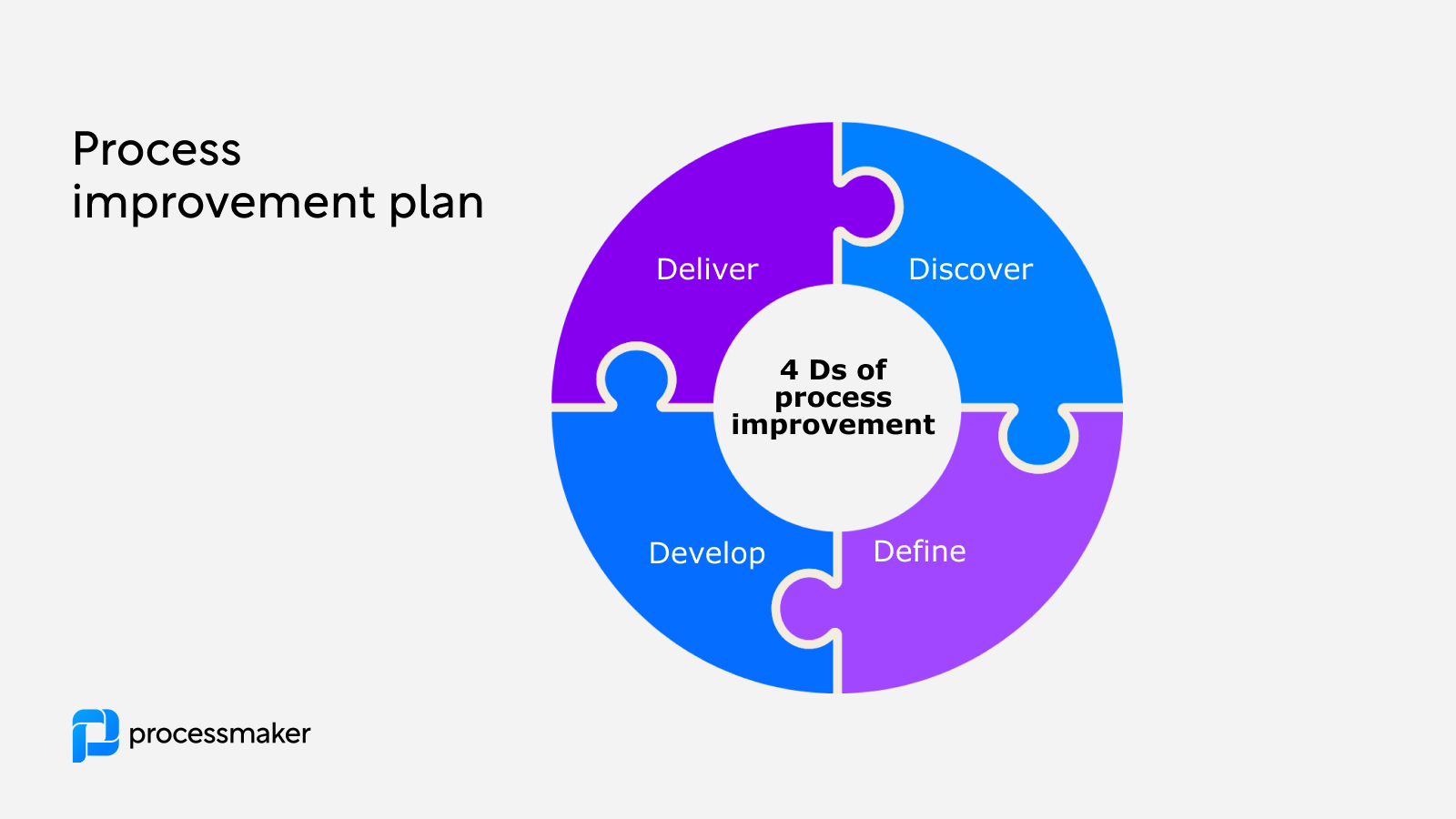![What Is Process Improvement? Definition & Examples [] What Is Process Improvement? Definition & Examples []](https://assets-site.staticpipefy.com/production/wp-content/uploads/2023/10/continuous-process-improvement-cycle.png)
Process improvement
Process improvement. It sounds so… corporate, doesn’t it? Like something stuffy executives talk about over endless PowerPoint presentations. But the truth is, improving your processes is crucial, whether you’re running a global corporation or just trying to keep your home office from descending into chaos.
Think of it this way: a process is just a series of steps you take to achieve a goal. You have processes for everything from making coffee in the morning to launching a new product. And just like any system, processes can become inefficient, outdated, or downright broken over time.
This guide will walk you through the process of process improvement in a relaxed, easy-to-understand way. We’ll ditch the jargon and focus on practical steps you can take to streamline your work, increase productivity, and reduce stress.

1. Identify the Problem
Identify the Problem
The first step in any process improvement journey is to identify the problems. What’s not working? Where are the bottlenecks? Where are you wasting time and resources?
Here are a few ways to identify problem areas:

Observe your current process: Watch yourself or your team go through the process. Take notes on what’s working, what’s not, and where things slow down.
2. Define the Scope
Define the Scope
Once you’ve identified the problem areas, it’s time to define the scope of your improvement project. What specific aspects of the process will you focus on? What are the boundaries of the project?
Setting clear boundaries will help you stay focused and avoid getting sidetracked. It’s okay to start small and gradually expand the scope of your project over time.
3. Document the Current Process
Document the Current Process
Before you can improve a process, you need to understand how it currently works. This involves documenting the current steps, decision points, and handoffs.
There are many ways to document a process, including:
Flowcharts: Visual representations of the process flow.
4. Analyze the Process
Analyze the Process
Now that you have a clear picture of your current process, it’s time to analyze it for areas of improvement. Ask yourself:
Are there any unnecessary steps? Can any steps be eliminated or combined?
5. Brainstorm Solutions
Brainstorm Solutions
Once you’ve identified the problem areas, it’s time to brainstorm potential solutions. Get creative and think outside the box. Don’t be afraid to challenge assumptions and explore unconventional ideas.
Here are a few brainstorming techniques:
Brainstorming: A classic technique where team members generate ideas freely.
6. Develop a Solution
Develop a Solution
Based on your brainstorming session, select the best solution or combination of solutions.
Consider the following factors when choosing a solution:
Feasibility: Is the solution realistic and achievable?
7. Create a Pilot Test
Create a Pilot Test
Before implementing the solution on a larger scale, conduct a pilot test to test its effectiveness. This will help you identify any potential issues and make necessary adjustments.
8. Implement the Solution
Implement the Solution
If the pilot test is successful, it’s time to implement the solution across the organization. This may involve training employees, updating procedures, and making necessary changes to technology and systems.
9. Monitor and Evaluate
Monitor and Evaluate
Once the solution is implemented, it’s important to monitor its performance and evaluate its effectiveness.
Track key performance indicators (KPIs): Are you seeing the expected improvements?
10. Continuously Improve
Continuously Improve
Process improvement is an ongoing journey, not a one-time event.
Embrace a culture of continuous improvement: Encourage employees to identify and suggest improvements.
Conclusion
Process improvement may seem daunting, but it doesn’t have to be. By following these simple steps and embracing a relaxed and collaborative approach, you can streamline your work, increase efficiency, and achieve your goals.
Remember, the goal of process improvement is not just to fix broken processes, but to create a more efficient, effective, and enjoyable work experience for everyone involved.